All Hallows' Eve, Samhain, Colcannon Night: Halloween has had many different costumes in N.L.
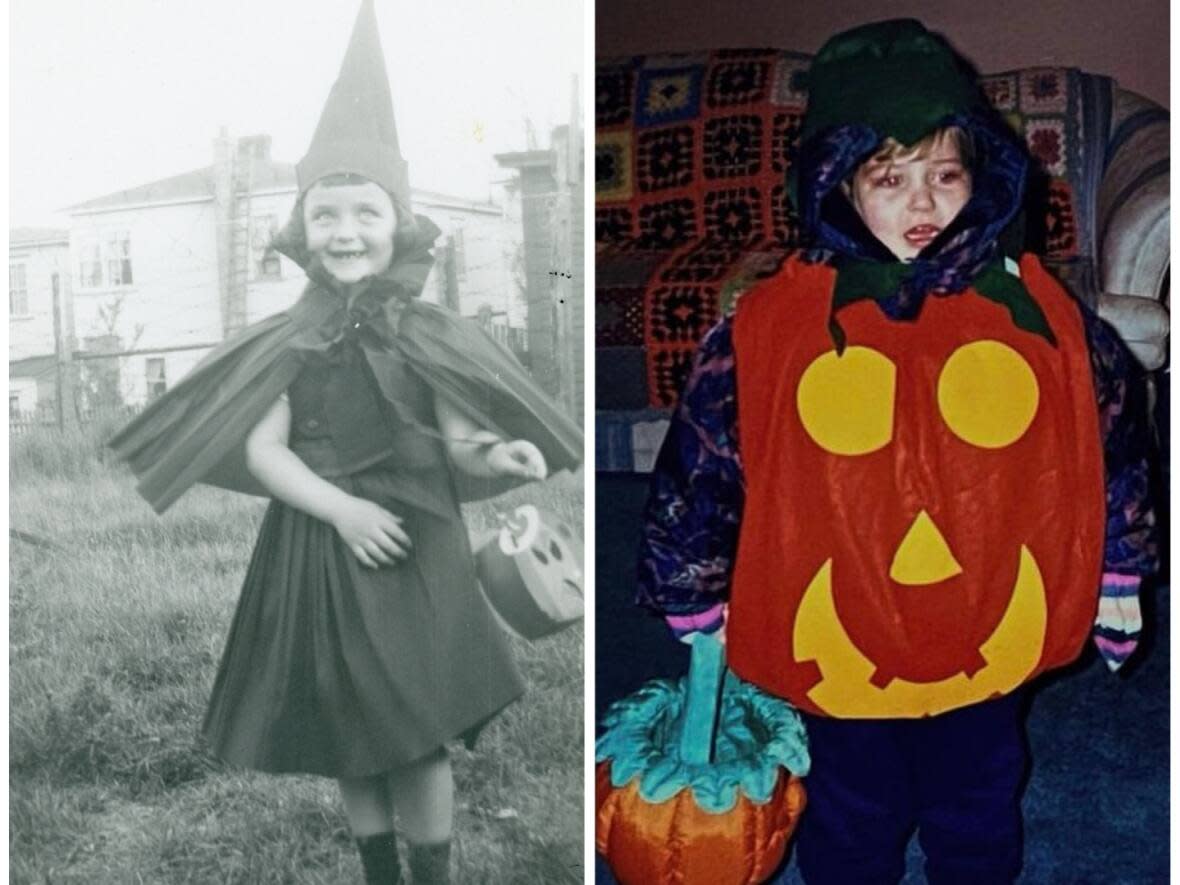
It's spooky season again, so we'll soon see a slew of superheroes, tiny Ted Lassos, and all the old standbys — witches, vampires, and scary clowns — knocking at the door. Still, as familiar as Halloween in Newfoundland and Labrador might seem, it used to look much different.
A 1902 edition of a St. John's newspaper, the Evening Telegram, referred to Halloween as "Colcannon night" and reported that, "Fortune-telling, scrying and other games were all part of the fun. The town was lively last night with parties."
A little dive into the folklore archives at Memorial University reveals first-hand accounts of Halloween in the 1930s and '40s in Trinity Bay. Here, Halloween didn't revolve around treats or tricks. Instead, folks would stay up late and watch the ocean, hoping to see ghost ships' flickering lights and hear their thundering chains.
Jillian Gould, an associate folklore professor at Memorial University, believes one of the most exciting things about holidays is that they're always in flux.
"We like to think that holiday customs are static — that they don't change — but they do. Nobody has picked up Halloween and moved it to July, but other than that, the name of the holiday, the food traditions and the mischief-making have shifted," she said.
Here's a little bit of the history of Halloween in Newfoundland.
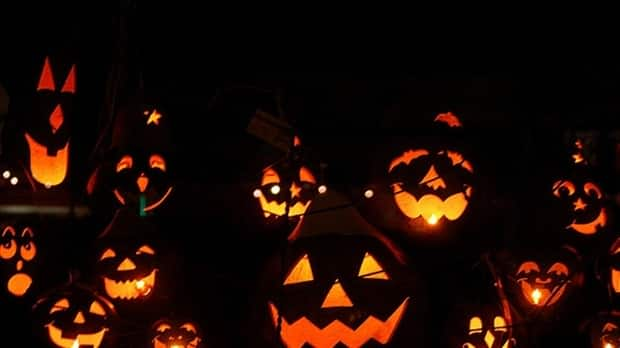
The name of the holiday
Plenty of scholars have connected modern celebrations of Halloween with Samhain (pronounced "sow-in" — "sow" as in a female pig), a festival celebrated millenniums ago when ancient Celts would light bonfires and wear costumes to scare off ghosts and hobgoblins. Samhain signaled the end of the harvest and the beginning of the dark half of the year.
The name All Hallows Eve connects to the Christian holiday of All Souls Day on Nov. 1. Like Samhain, celebrations of All Hallows Eve were marked with bonfires, feasting, ghost stories and costumes. It's widely believed that the Catholic Church was attempting to replace the Celtic festival with a church-approved version.
The holiday's name has changed several times in Newfoundland and Labrador, and archives are chock-a-block with different misnomers for Oct. 31.
All Hallows' Eve, Samhain, Colcannon Night, the Eve of All Saints Day, and Snap Apple Night are some of the most obvious ones. In rural areas of Newfoundland and Labrador, the days preceding Halloween are sometimes referred to as "mischief nights." In other communities, Bonfire Night is all mixed up in Halloween traditions.
"There's a misconception that all of Newfoundland and Labrador celebrated holidays in the same way and shared traditions, but it can be very regional," said Gould.
"What happened in Ramea could be very different from what happened in Bonavista. There's a significant regional difference in traditions that doesn't get explored enough."
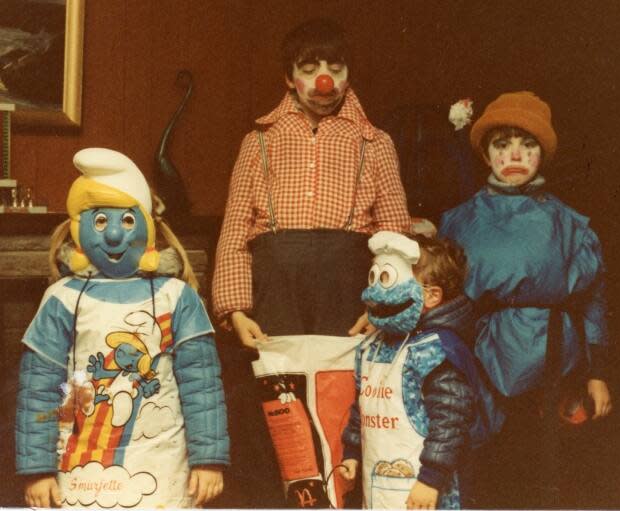
Food
In parts of Ireland, colcannon, a dish made of mashed potatoes, kale and butter was a big part of the festivity on Oct, 31. Party hosts would hide prizes and charms in the colcannon that were said to predict the future. Finding a coin signaled wealth, a thimble or button indicated you'd die friendless and alone, or you could discover a ring, which meant you'd be married within the year.
Once the dish made it to Newfoundland's rocky shores, the recipe changed, and party hosts used mashed turnips and cabbage.
The fortune-telling, however? That stayed the same.
On Nov. 1, 1896, St. John's newspaper the Daily News reported: " A Cauld Cannon party given by Miss O'Neil of the West End was a most enjoyable affair — over 20 couples sat down to the repast. A young lady in a Water Street book and stationery store found the ring. Though nobody acknowledged finding the button, it is affirmed that a certain young lady, not a mile from Queen's Street, got it but would not own it."
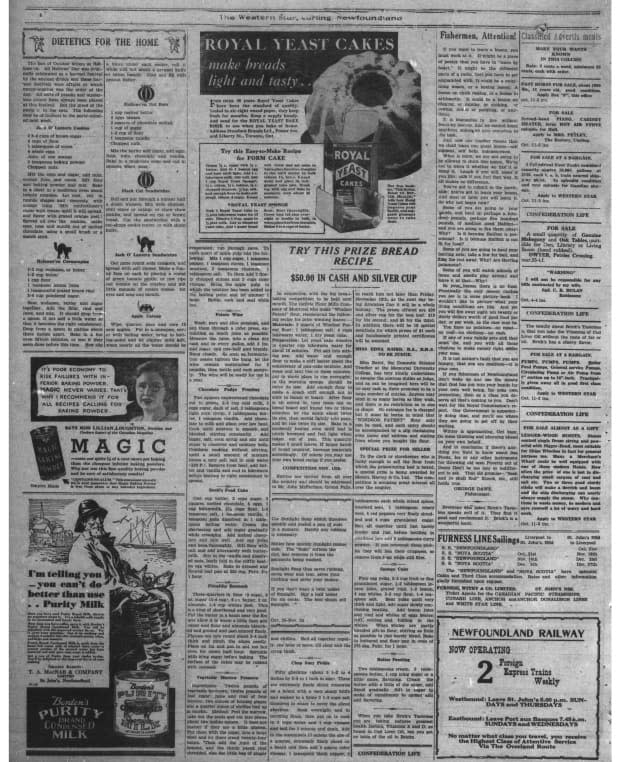
Fortune-telling through food might make you think of pancake suppers or King Cake, a brightly coloured confection studded with coins and thimbles, usually eaten at Mardi Gras.
"There's something similar about these traditions," Gould said. "Mardi Gras is a carnival, a time of transgression and costumes, that shares many things with Halloween, so I'm not surprised to see a connection between these food traditions."
While there are still colcannon recipes and references to colcannon nights in personal accounts into the 1930s and '40s, Halloween recipes and mentions of Halloween food started to shift in Newfoundland newspapers.
These two recipes from the Oct. 30, 1933, edition of the Western Star are particularly interesting to Gould.
Black Cat Sandwiches
Boil and put through the mincer half a dozen wieners.
Mix with chutney, chili sauce, or catsup or chow chow pickles and spread on rye or brown bread.
Cut the sandwiches with a cat-shaped cookie cutter or with a sharp knife.
Apple Catsup
Wipe, peel, core 12 sour apples.
Put in a saucepan, bring to a boiling point and let simmer until soft. Nearly all the water should be evaporated.
To each quart of apple pulp add the following: 1 cup sugar, 1 tsp pepper, 1 tsp cloves, 1 tsp mustard, 1 tsp salt.
Add 2 finely chopped onions and 2 cups cider vinegar.
Bring it to the boiling point.
Bottle cork and seal while hot.
"When I study recipes, I think about who the recipe was for and the intention," said Gould. "The black cat sandwiches seem to be a local, affordable take on a dainty pâte sandwich, so this could be a recipe for an adult Halloween cocktail party."
"The interesting thing about the catsup recipe is the sour apples. The author is probably referring to these almost oval-shaped tiny apples that grow in some areas of Newfoundland. This recipe might be for a cocktail party. It's about celebrating Halloween, but it's also about using what's nearby. Food and older recipes are a great lens into the past."
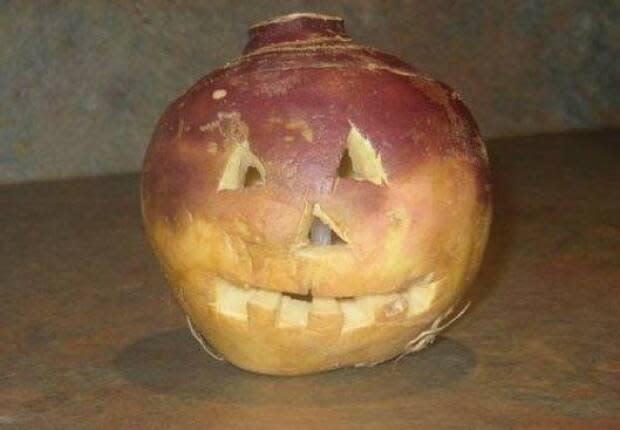
Lanterns, Ghosts, Tricks and Treating
While today's grinning jack-o'-lanterns are carved from pumpkins, turnips with spooky etchings were once a common sight in Newfoundland and Labrador.
This tradition of carving a turnip came from the Celtic tale of Stingy Jack, who tricked the devil for money and riches. Stingy Jack (reputedly) roamed the Earth on Oct. 31, and people would light their turnip lanterns to scare him away from homes.
A fascinating record of Halloween in Ramea in the 1950s mentions trick-or-treating had only existed in this town for four years. Before that, younger children roamed with carved turnips or tin cans lit with candles, while the older boys of Ramea would light a boot on fire, place it on top of a large stick, and spend Halloween wandering, removing fences and causing mischief.
Another record from Ramea tells of a more whimsical take on Halloween.
"In Ramea, at midnight on Halloween, many children believed witches came out and swept the cobwebs off the stars."
Gould said records like this reveal what might have been meaningful at the time, but also the threads that continue to be meaningful.
"We remain interested in spooky things — fortune-telling, ghost stories, lanterns and food. These are all connected to Halloween, but there are shifts and variations over time. People keep the parts of the holiday that mean something to them and the rest changes."


